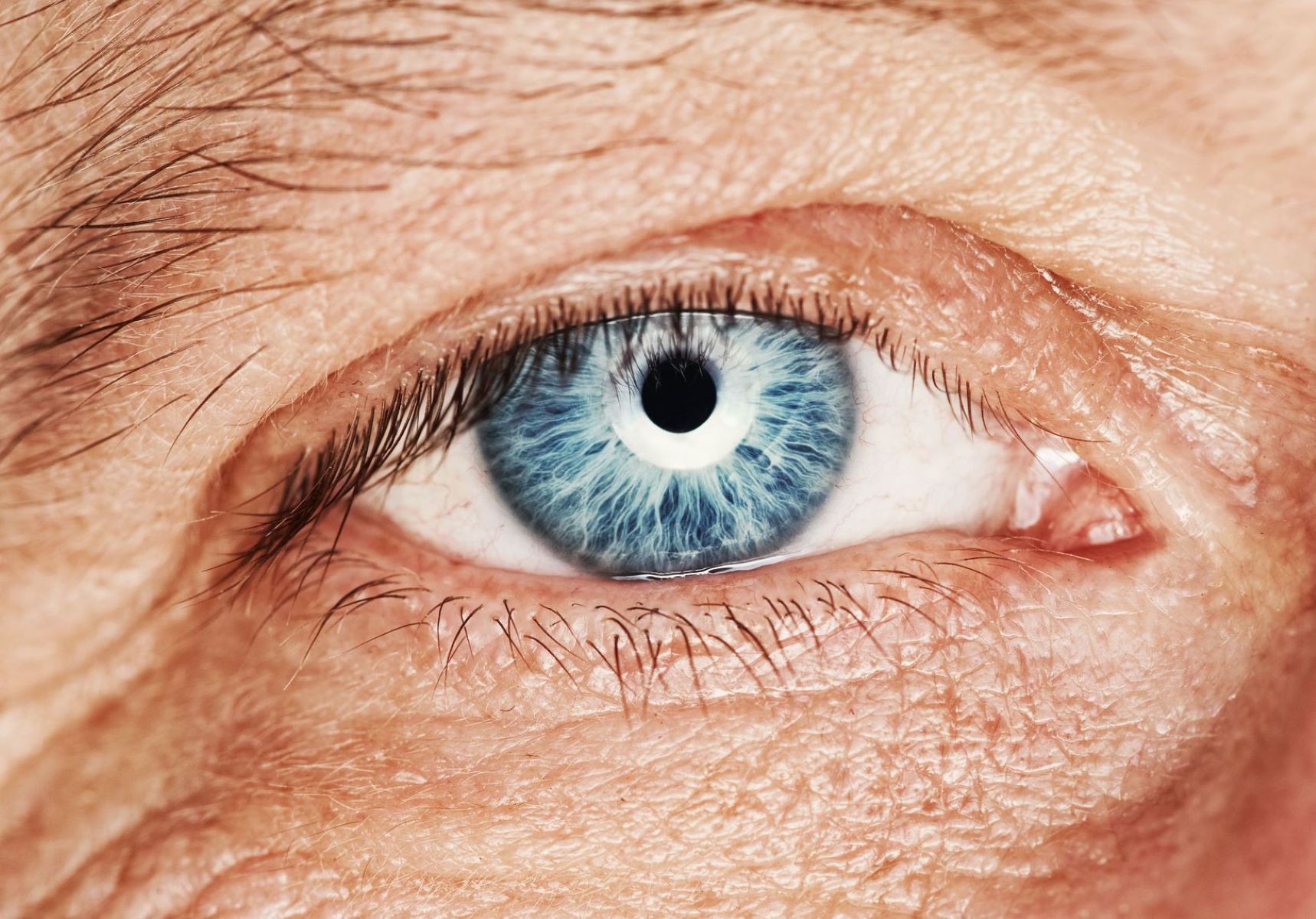
Ever woken up with red, irritated eyes and wondered why? You might be dealing with Floppy Eyelid Syndrome (FES). This condition, often overlooked, affects many middle-aged, overweight men but can impact anyone. FES causes your eyelids to become unusually lax, flipping over during sleep and leading to chronic eye irritation. It's not just about discomfort; FES is linked to serious issues like obstructive sleep apnea and keratoconus. Understanding FES is crucial for managing its symptoms and preventing complications. Let's dive into 35 essential facts about this underdiagnosed condition to help you recognize and address it effectively.
What is Floppy Eyelid Syndrome?
Floppy Eyelid Syndrome (FES) is a condition that affects the eyelids, causing them to become unusually lax and prone to flipping over during sleep. This can lead to various eye problems and discomfort. Let's dive into some key facts about this condition.
-
Definition and Prevalence
FES is a bilateral eyelid malposition that commonly involves the upper eyelids. It leads to recurrent or chronic ocular surface irritation and chronic papillary conjunctivitis. The prevalence ranges from 3.8% to 15.8%, though it's likely underestimated. -
Demographics
Middle-aged, overweight males are predominantly affected by FES. Obesity is a significant risk factor, especially in those with obstructive sleep apnea-hypopnea syndrome (OSAHS). -
Pathogenesis
The extensive eyelid laxity in FES is due to a significant decrease in elastin content. This decrease explains the spontaneous eversion of the upper eyelids during sleep, leading to chronic irritation and inflammation.
Symptoms and Clinical Manifestations
Understanding the symptoms and clinical features of FES can help in early diagnosis and treatment.
-
Eye Irritation
Patients often experience non-specific symptoms like eye irritation and a long history of ocular redness and discharge. -
Spontaneous Eversion
The eyelids can spontaneously "flip over" during sleep, especially in a prone position due to rubbing on the pillow. -
Horizontal Laxity
Increased horizontal laxity and redundancy of the lid are common findings. -
Chronic Papillary Conjunctivitis
This condition is characterized by severe papillary conjunctivitis with whitish mucus discharge. -
Superficial Punctate Erosions
These erosions occur due to constant irritation and inflammation of the cornea. -
Corneal Abrasions
Corneal abrasions are often superficial and caused by the mechanical irritation of the cornea by the lax eyelid during sleep. -
Microbial Keratitis
Chronic irritation and inflammation of the cornea can lead to an increased risk of infection, resulting in microbial keratitis.
Systemic Associations
FES is often linked with various systemic conditions, making it essential to consider these associations during diagnosis.
-
Obesity
Obesity is a significant risk factor for FES, particularly in middle-aged males. -
Obstructive Sleep Apnea (OSA)
FES is strongly associated with OSA. The mechanical injury caused by the constant rubbing of the pillow against the lax eyelid during sleep is believed to be a primary cause of chronic conjunctivitis in patients with FES. -
Keratoconus
The mechanical effect of the upper eyelids on the cornea can lead to corneal thinning and ectasia, characteristic features of keratoconus. -
Ethnicity
FES is less commonly seen in East Asians compared to other ethnic groups.
Diagnostic Procedures and Challenges
Diagnosing FES can be tricky due to its non-specific symptoms and lack of specific diagnostic tests.
-
Clinical Diagnosis
FES is primarily diagnosed based on history, clinical features, and systemic associations. -
Differential Diagnosis
The differential diagnosis for FES includes blepharitis, allergic conjunctivitis, atopic keratoconjunctivitis, involutional ptosis, giant papillary conjunctivitis, contact lens complications, dermatatochalasis, and ectropion. -
Misdiagnosis
FES is often misdiagnosed due to its non-specific symptoms and lack of diagnostic criteria.
Treatment Options
Managing FES involves addressing both the mechanical and inflammatory components of the condition.
-
Conservative Treatment
The first line of management includes the use of lubricating eye drops to reduce irritation and inflammation. -
Artificial Tears
Artificial tears help maintain tear film stability and reduce symptoms like redness and photophobia. -
Topical Corticosteroids
These may be used to reduce inflammation but should be limited due to potential side effects. -
Surgical Interventions
In severe cases, surgical interventions like tarsal plate tightening or eyelid suspension may be necessary to improve lid stability and reduce eversion.
Importance of Early Recognition
Early recognition of FES is crucial to avoid its chronic, distressing course and associated morbidities.
-
Chronic Course
The condition often remains undetected until multiple conservative treatment regimens have failed. -
High Index of Suspicion
A high index of suspicion is necessary for accurate diagnosis and timely intervention.
Role of Healthcare Professionals
Both ophthalmologists and sleep specialists play critical roles in the diagnosis and management of FES.
-
Ophthalmologists
They should be aware of the systemic associations of FES, particularly with obstructive sleep apnea and keratoconus. -
Sleep Specialists
Managing obstructive sleep apnea is essential for reducing the risk of complications like chronic conjunctivitis and microbial keratitis.
Patient Education
Educating patients about FES is essential for effective management.
-
Informing Patients
Patients should be informed about the condition, its symptoms, and the importance of early recognition. -
Conservative Treatments
They should be advised on the use of lubricating eye drops and other conservative treatments. -
Referral to Specialists
In more severe cases, patients should be referred to ophthalmologists or sleep specialists for further evaluation and treatment.
Mechanical Injury and Poor Apposition
Mechanical injury and poor apposition of the eyelid contribute significantly to the symptoms of FES.
-
Mechanical Injury
Constant rubbing of the pillow against the lax eyelid during sleep is believed to be a primary cause of chronic conjunctivitis in patients with FES. -
Poor Apposition
Poor apposition of the lax upper eyelid to the globe with inadequate spreading of the tear film leads to corneal and conjunctival compromise.
Chronic Papillary Conjunctivitis and Other Complications
Chronic papillary conjunctivitis and other complications are common in FES.
-
Chronic Papillary Conjunctivitis
This condition is characterized by the formation of papillae on the conjunctiva, leading to chronic inflammation and irritation. -
Eyelashes Ptosis
The laxity of the eyelid can cause the eyelashes to droop, leading to chronic irritation and inflammation of the conjunctiva. -
Lateral Lid Imbrication
The laxity of the eyelid can cause the lateral edge of the upper eyelid to overlap the lower eyelid margin, leading to chronic irritation and inflammation. -
Chronic Ocular Surface Irritation
Constant irritation and inflammation of the conjunctiva can lead to chronic symptoms like redness, photophobia, and a foreign body sensation. -
Mucoid Discharge
Chronic inflammation and irritation of the conjunctiva can lead to the production of mucoid discharge, often whitish in color.
Key Points on Floppy Eyelid Syndrome
Floppy Eyelid Syndrome (FES) often flies under the radar but can cause significant discomfort. It mainly affects middle-aged, overweight men, leading to eyelid laxity and chronic eye irritation. Symptoms include eye redness, discharge, and spontaneous eyelid eversion during sleep. FES is linked to conditions like obstructive sleep apnea and keratoconus. Diagnosis relies on clinical features and patient history, as no specific test exists. Treatment ranges from lubricating eye drops to surgical interventions for severe cases. Early recognition is crucial to prevent chronic issues. Ophthalmologists and sleep specialists play vital roles in managing FES. Patient education is essential for effective treatment. Understanding FES can lead to better outcomes and improved quality of life for those affected.
Was this page helpful?
Our commitment to delivering trustworthy and engaging content is at the heart of what we do. Each fact on our site is contributed by real users like you, bringing a wealth of diverse insights and information. To ensure the highest standards of accuracy and reliability, our dedicated editors meticulously review each submission. This process guarantees that the facts we share are not only fascinating but also credible. Trust in our commitment to quality and authenticity as you explore and learn with us.


